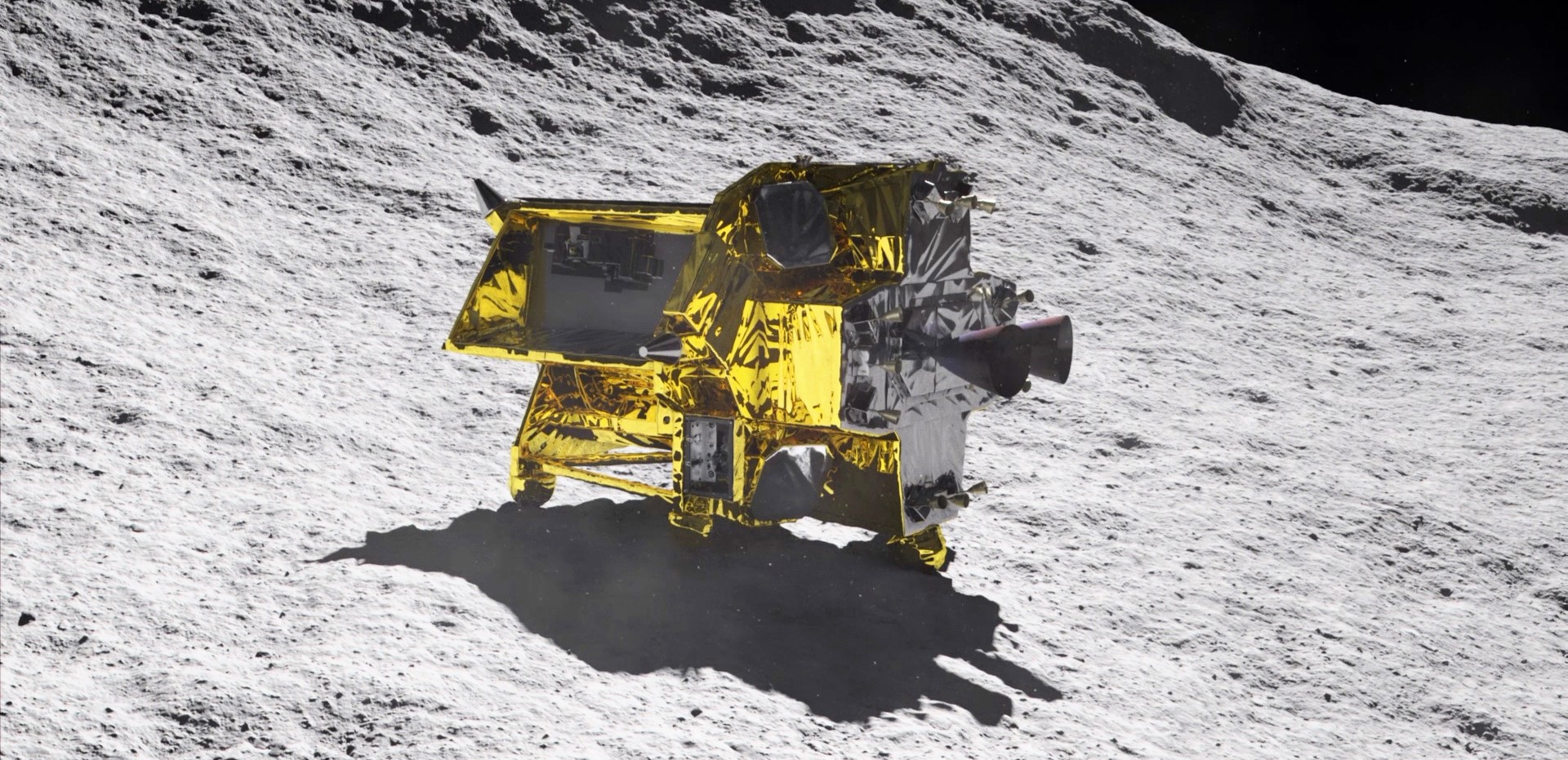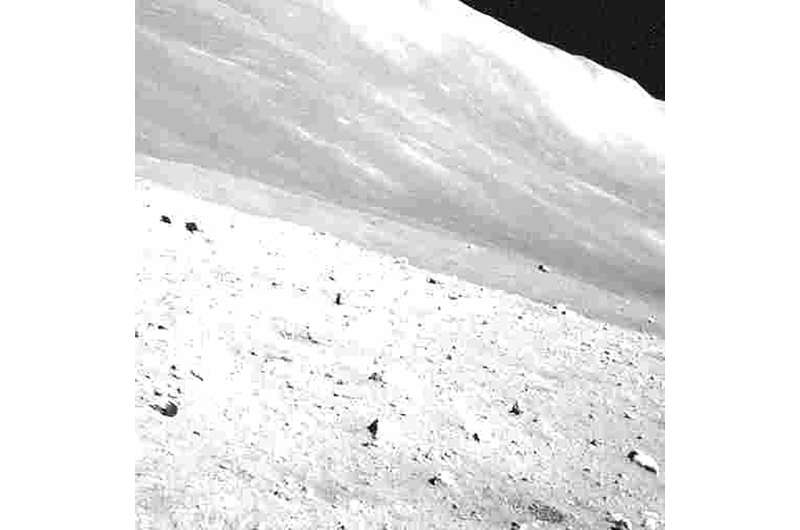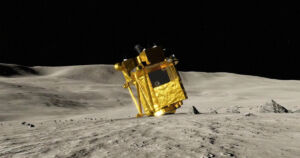On January 20th, 2024, the Japan Aerospace Exploration Agency (JAXA) made history when its Smart Lander for Investigating Moon (SLIM) made a soft landing on the Moon, becoming the first Japanese robotic mission to do so. This small-scale lander was designed to investigate the origins of the Moon and test technologies that are fundamental to exploring the low-gravity lunar environment. Unfortunately, mission controllers lost contact with the lander after April 28th, 2024, and have spent the last few months trying to reestablish communications.
Continue reading “JAXA Officially Wraps Up its SLIM Lander Mission”Japan’s Lunar Lander Fails to Check-in
On January 19th, 2024, the Japanese Aerospace Exploration Agency (JAXA) successfully landed its Smart Lander for Investigating Moon (SLIM) on the lunar surface. In so doing, JAXA became the fifth national space agency to achieve a soft landing on the Moon – after NASA, the Soviet space program (Interkosmos), the European Space Agency, and the China National Space Agency (CNSA). SLIM has since experienced some technical difficulties, which included upending shortly after landing, and had to be temporarily shut down after experiencing power problems when its first lunar night began.
On the Moon, the day/night cycle lasts fourteen days at a time, which has a drastic effect on missions that rely on solar panels. Nevertheless, SLIM managed to reorient its panels and recharge itself and has survived three consecutive lunar nights since it landed. However, when another lunar night began on May 27th, JAXA announced that they had failed to establish communications with the lander. As a result, all science operations were terminated while mission controllers attempt to reestablish communications, which could happen later this month.
Continue reading “Japan’s Lunar Lander Fails to Check-in”Japan’s Lunar Lander Survives its Third Lunar Night
Space travel and exploration was never going to be easy. Failures are sadly all too common but it’s wonderful to see missions exceed expectations. The Japanese Space Agency’s SLIM lunar lander was only supposed to survive a single day but it’s survived three brutal, harsh lunar nights and is still going. The temperatures plummet to -170C at night and the lander was never designed to operate into the night. Even sat upside down on the surface it’s still sending back pictures and data.
Continue reading “Japan’s Lunar Lander Survives its Third Lunar Night”Against all Odds. Japan’s SLIM Lander Survived a Second Lunar Night Upside Down
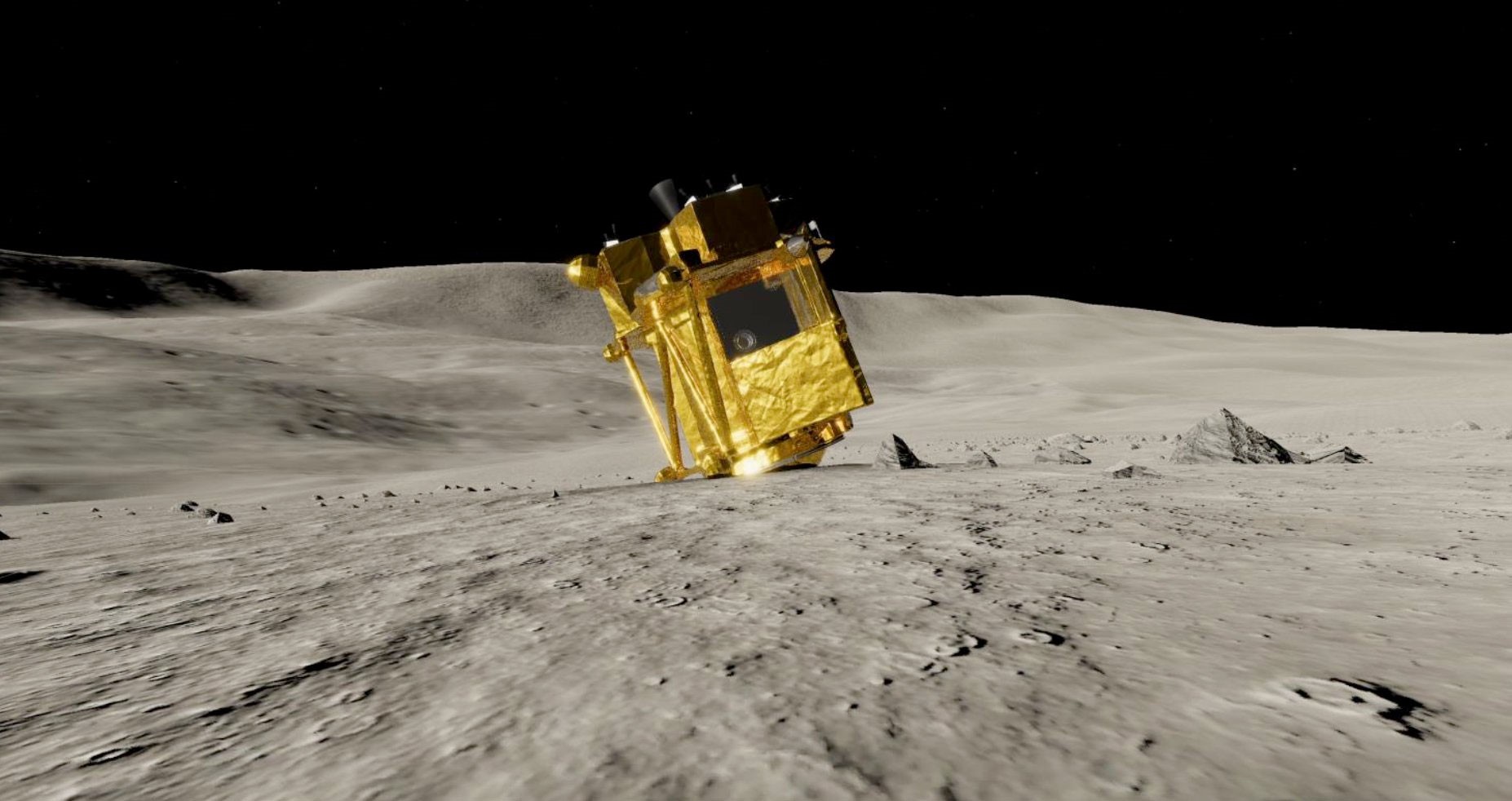
You might remember the SLIM lunar lander that managed to land upside-down! The probe from the Japanese Space Agency has survived its second night on the Moon and returns a new photograph. Despite the solar panels pointing away from the Sun during the day it was still able to capture the image and transmit to Earth. All that while surviving the harsh -130C lunar night.
Continue reading “Against all Odds. Japan’s SLIM Lander Survived a Second Lunar Night Upside Down”Surprise! Japan’s SLIM Moon Lander Wakes Up After a Freezing Night

Japan’s space agency didn’t expect its wrong-side-up SLIM moon lander to revive itself after powering down for a circuit-chilling lunar night on Feb. 1. But that’s exactly what happened.
“Last night, a command was sent to SLIM and a response received, confirming that the spacecraft has made it through the lunar night and maintained communication capabilities!” the SLIM mission team reported today in a posting to X / Twitter.
Continue reading “Surprise! Japan’s SLIM Moon Lander Wakes Up After a Freezing Night”Japan Moon Lander Sleeps After Sending Science — Will It Wake Up Again?

After a few days of wakefulness, Japan’s SLIM moon lander has gone dormant once more at the start of a 14-day-long lunar night. The upended robot sent back a stream of data and imagery while its solar cells were in position to soak up sunlight, and its handlers hope they can get SLIM to wake up again and resume its work after lunar sunrise in mid-February.
Continue reading “Japan Moon Lander Sleeps After Sending Science — Will It Wake Up Again?”Japan’s SLIM Lander Finds Power Even Though It’s Face Down
The Moon is a bit of a hot bed for exploration of late. The Japanese agency JAXA have been getting in on the act but their SLIM lander fell on its side with its solar panels pointing toward the ground. Until today, JAXA thought that was it but today it seems that they have managed to re-established contact again.
Continue reading “Japan’s SLIM Lander Finds Power Even Though It’s Face Down”Japan’s Moon Lander Is Lying On Its Side After Hitting Its Target
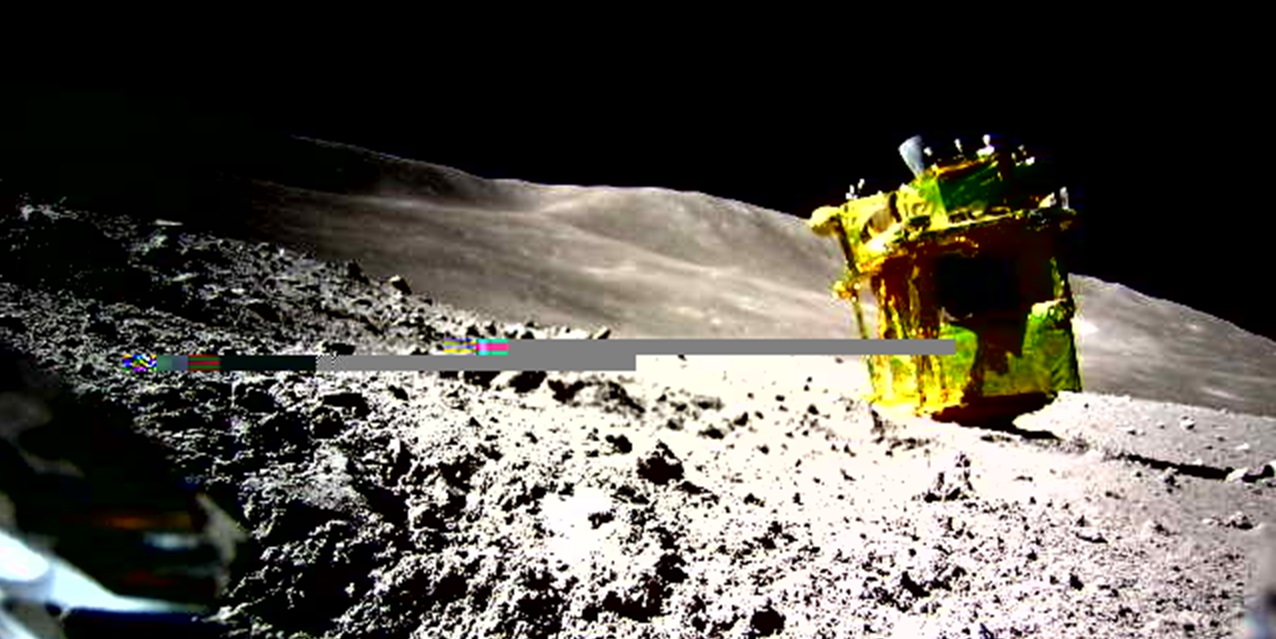
Now we know why Japan’s lunar lander wasn’t able to recharge its batteries after touching down on the moon last week: The spacecraft appears to have tumbled onto its side, with its solar cells facing away from the sun.
The good news is that the Smart Lander for Investigating Moon, or SLIM, achieved its primary mission of setting down within 100 meters (330 feet) of its target point — and that the mission’s two mini-probes, which were ejected during SLIM’s descent, are working as intended.
Scores of images were taken before and after landing. One of the pictures. captured by a camera on the ball-shaped LEV-2 mini-probe, shows the lander sitting at an odd angle with its thrusters facing upward and its solar cells facing westward.
To conserve battery power, mission managers at the Japan Aerospace Exploration Agency shut down SLIM after the probes transmitted the imagery they collected. But there’s still a chance that the sun’s shifting rays could provide enough power to allow for further operations in the week ahead.
Continue reading “Japan’s Moon Lander Is Lying On Its Side After Hitting Its Target”Japan’s Moon Lander Touches Down, But Power Problem Mars Its Mission
Update for Jan. 21: The Japan Aerospace Exploration Agency shut down its moon lander to conserve battery power, but says the lander might be recharged and revived if sunlight hits the solar cells at the right angle.
Japan has become the fifth nation to land a functioning robot on the moon, but the mission could fall short of complete success due to a problem with the lander’s power-generating solar cells.
Continue reading “Japan’s Moon Lander Touches Down, But Power Problem Mars Its Mission”
